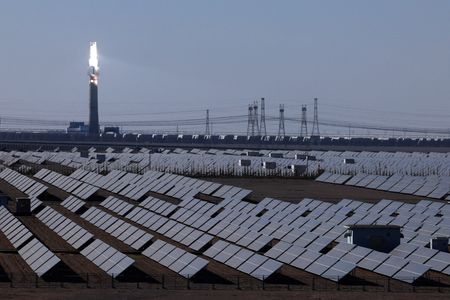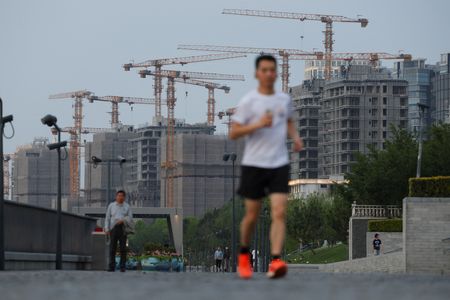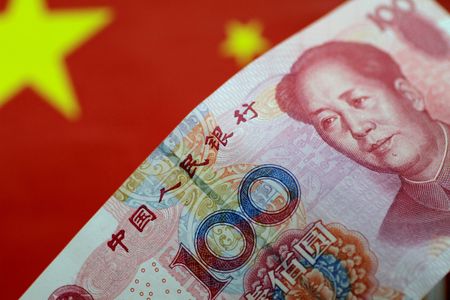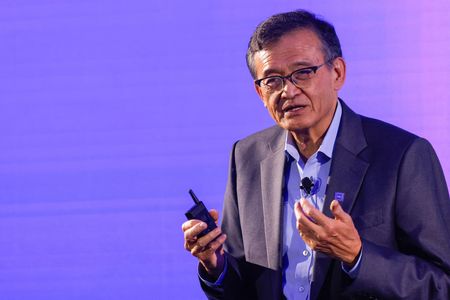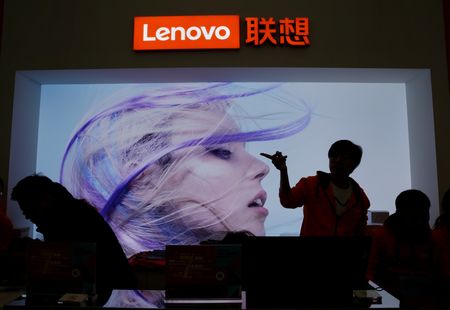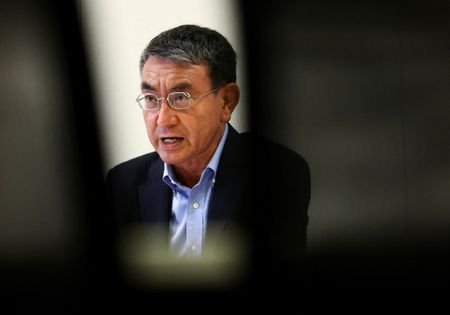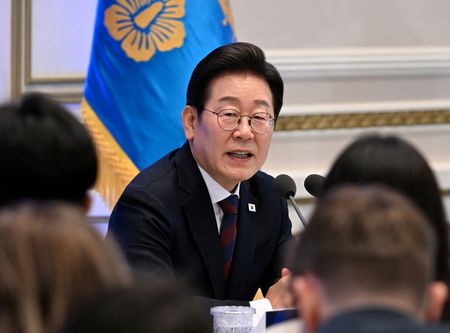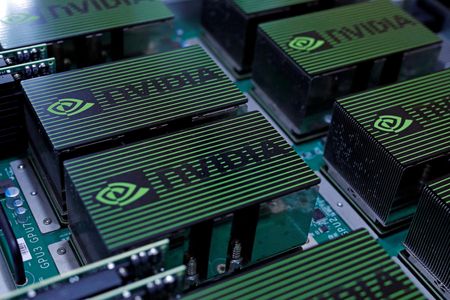By Joe Cash and Colleen Howe
BEIJING (Reuters) -China’s efforts to curb industrial overcapacity face their first test in the indebted and bloated polysilicon sector, a key cog in solar cell production, where analysts say it is easiest for Beijing to intervene but still difficult to succeed.
Under the plan, devised by industry players in the presence of Chinese regulators, big producers will pool 50 billion yuan ($7 billion) to buy out the least efficient facilities and shut them down, then form a cartel to halt relentless price wars.
Ideally, when prices rise, the loss-making producers will turn profitable and reimburse the debt incurred in the process. Reduced output and higher polysilicon costs would force solar panel makers – which can produce roughly twice as much annually as the world buys and have been a source of trade tensions between China and the West – to consolidate.
But analysts see risks at every stage of this plan.
First, it is unclear if the industry can agree who’s in or who’s out of the cartel.
GCL Technology Holdings, one of the biggest producers, said earlier this month cartel planning was close to wrapping up but declined to provide details of the other participants.
Banks – whose incentive to finance this acquisition is to ensure that what they rate as a “safe” sector doesn’t turn to “risky” – would likely be involved in the process, said Dan Wang, China director at Eurasia Group.
Analysts warn local authorities, who have strived to fulfil Beijing’s strategic green energy vision by handing out subsidies, tax breaks and cheap land to the sector, may not want the solar supply chains on their turf to shut.
“Which local government is going to let go of their industry first?” said Max Zenglein, senior economist for the Asia-Pacific at The Conference Board research group. “They’re going to be very cautious.”
Finally, even if the cartel does form, any success creates the conditions for failure: after prices climb, members might be tempted to raise output and reap the profits.
Reformers face all these risks despite the industry having fewer players and fewer supply chain inputs than most other sectors in the world’s second-largest economy, where overcapacity is endemic and deflationary, and threatens trade relations and long-term growth.
“Success is hardly a foregone conclusion,” Gavekal Dragonomics analysts Tilly Zhang and Wei He said in a note.
If the overcapacity crackdown “fails to get traction in polysilicon, it will struggle in the many other industries” where the government has less capacity to foster swift changes, they said.
GCL’s peer Tongwei declined to comment. Polysilicon producers Daqo New Energy and TBEA did not respond to requests for comment.
The solar and metals industry associations, the National Development and Reform Commission (NDRC)- China’s state planner – and the Ministry of Industry and Information Technology also did not respond to requests for comment.
IS EVERYONE GAME?
Over the past five years, the top four Chinese manufacturers alone built about two-thirds of the industry’s capacity, which stood at 3.25 million metric tons at the end of 2024, according to Bernreuter Research, a consultancy.
In 2025, Bernreuter anticipates an average utilisation of 35%-40%, down from 57% last year.
Morningstar estimates about 965,000 tons of polysilicon capacity was built or is still under construction this year, citing the China Photovoltaic Industry Association.
Past attempts to get the solar industry to self-regulate have failed. Last October, the solar industry body proposed a price floor for solar modules, but the temptation for manufacturers to undercut competitors proved too enticing.
The NDRC called for a ban on new production in an online meeting in February.
Still, Karamay, a city in the northwestern region of Xinjiang announced a 3 billion yuan solar module manufacturing plant as recently as May, Chinese media reported. The Xinjiang energy regulator did not respond to phone calls from Reuters.
A new 140,000-ton polysilicon manufacturing plant in Qinghai, a major provincial investor, also started test operations in March, according to a trade media report. The energy regulator for northwestern China, which includes Qinghai, did not respond to a faxed request for comment.
PAIN THRESHOLD
In the event that the polysilicon cartel overcomes industry and local government opposition, it can raise prices to levels that the least competitive firms in the downstream solar panels sector cannot afford, forcing their exit, analysts say.
“Unless I see a lot of defaults all of a sudden really shrinking the size of the industry, I don’t see how this is going to work,” said Alicia Garcia-Herrrero, Asia-Pacific chief economist at Natixis.
She said that would test the Chinese leadership’s tolerance for a bloodbath in an industry that it had championed as a national priority.
The case for protecting strategic priorities also applies to other sectors, from electric vehicles and batteries to shipbuilding, all with supply chains much more complex than solar.
“It’s very easy to build capacity to burn money, but then to scale it down and direct that in a healthy manner is much more difficult,” said The Conference Board’s Zenglein.
($1 = 7.1815 Chinese yuan renminbi)
(Reporting by Joe Cash and Colleen Howe in Beijing; Graphics by Kripa Jayaram; Editing by Lewis Jackson, Marius Zaharia and Sonali Paul)

